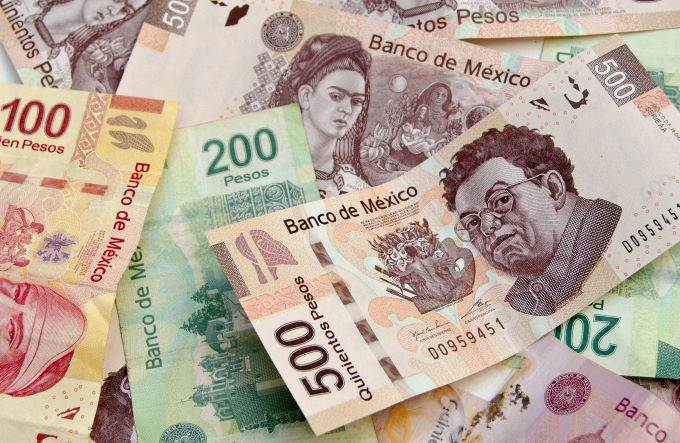 The Mexican peso has been going through a rough patch since the end of the third week of February. Last week alone it managed to lose around 3.73 percent of its value against the US dollar.
The Mexican peso has been going through a rough patch since the end of the third week of February. Last week alone it managed to lose around 3.73 percent of its value against the US dollar.
2019 wasn't a good year for the Mexican economy, as it contracted for the first time in a decade. This poor economic performance was mainly caused by a decreasing industrial activity, as it fell by 1.2 percent, followed by a contraction in the agricultural and the farming sector, which contracted 1.1 percent. The services sector barely expanded, growing 0.2 percent.
On Wednesday last week, the markets learned that the Mexican central bank decided to cut its 2020 growth forecast, setting its growth outlook to between 0.5 and 1.5 percent. The bank also decided to increase its inflation outlook from 3 percent to 3.2 percent, aided by the recent increase of the minimum wage by 20 percent. This undoubtedly encouraged bearishness among investors.
On its quarterly economic report, the central bank stated that the Mexican economy is expected to keep facing a "complex environment", quoting the coronavirus epidemic as one of the hindering factors, as it is expected to affect the global supply chains and the global economic performance in a significant way.
It's important to point out that the Mexican economy is highly reliant on international trade, therefore it shouldn't be surprising for us that the bank took the global economic performance into consideration. Besides this, they anticipate an improvement in the domestic demand, though this recovery is expected to be gradual.
“This outlook anticipates a more gradual recovery of domestic demand throughout the forecast horizon," explained the bank on its report.
This announcement further pushed down the Mexican peso during Wednesday's session, causing it to ease 0.95 percent against the dollar. On Thursday it went down 1.25 percent against the dollar as investors learned that Petroleos Mexicanos (Pemex) had a US $18.3 billion loss in 2019, doubling the previous year's losses.
Pemex is being hit by lower oil exports which have affected oil production in a significant way. The company has been facing this problem for more than a decade, which has caused a lot of concern among rating agencies and investors. However, Moody’s Investors Service said on Friday that despite the recent negative data, they expect Pemex to increase oil production by 1 percent in 2020, saying that the company showed "good progress" in 2019.
As if the above were not enough, on Friday the Mexican government confirmed the arrival of the coronavirus epidemic to the central American country. The Subsecretary of prevention and promotion of health Hugo López-Gatell announced that a Mexican citizen that recently came back from Italy was diagnosed, adding that the patient is currently stable as it's a low-risk case given his age and medical record. A second case is still being evaluated and its confirmation is still pending. The Mexican president said regarding the arrival of the outbreak that it's not something terrible or fatal and that the media should avoid sensationalism and exaggeration.
In any case, the markets reacted negatively as the Mexican peso hit a 5-month low and closing the session in the negative territory, going down by 0.58 percent against the greenback.
Next week, among other indicators that may be relevant to the performance of the Mexican peso, investors will learn about the consumer and business confidence indexes as well as the IHS Markit's manufacturing PMI for February.
